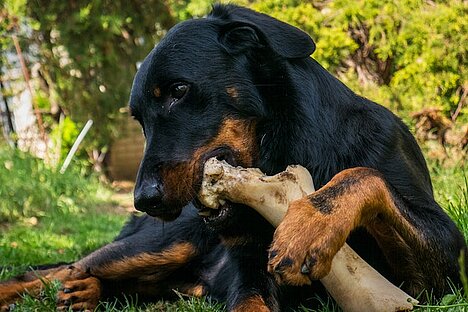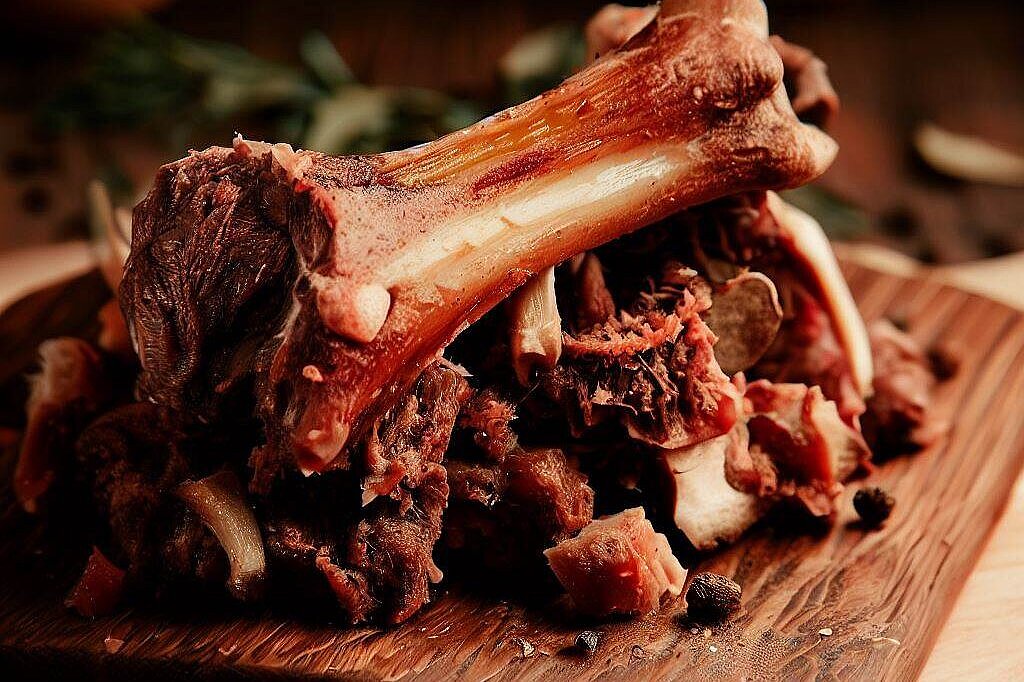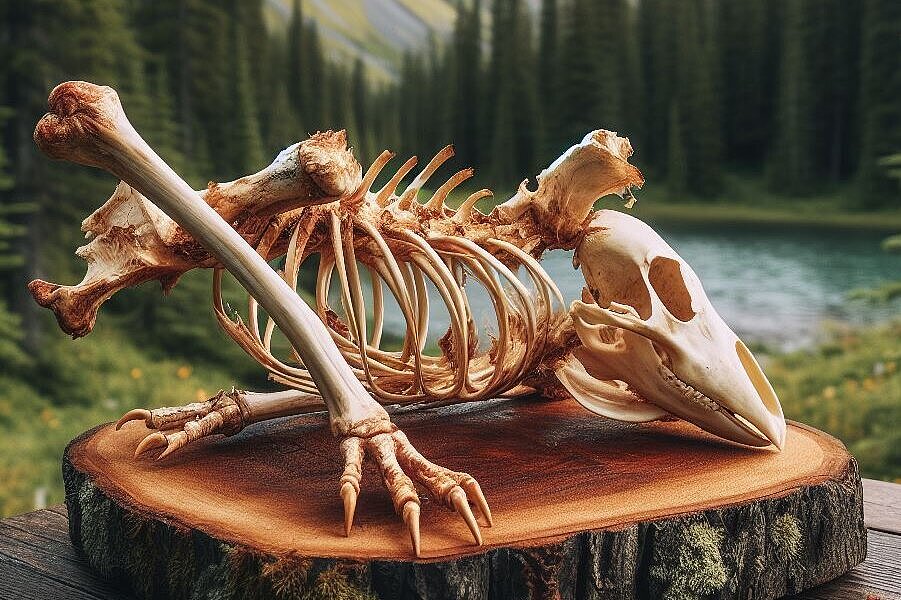Bones

Which bones can your dog eat?
Not all bones are the same. There are different types of bones that vary in size, shape, hardness and composition. Depending on the type of bone you give your dog, this can have different effects on his health.
As a general rule, dogs should only eat raw bones. Cooked or roasted bones can splinter and form sharp edges that can injure your dog's gastrointestinal tract. In addition, cooked or roasted bones can contain salmonella or other bacteria.
The best raw bones for dogs are soft and meaty tubular bones, such asrib, breast or shoulder bones from beef or lamb. These bones contain a lot of cartilage and connective tissue, which are easy to digest and provide important nutrients such as calcium. These bones also help to strengthen your dog's teeth and clean them naturally.
However, you should not give your dog any hard or sharp marrow or antler bones. These can wear down your dog's teeth or even break them off. Bone splinters can also be dangerous and lead to blockages or internal bleeding.
You should be particularly careful with bones from poultry or rabbits. These are very thin and brittle and can splinter easily. If you still want to give your dog poultry or rabbit bones, only do so under supervision and preferably with plenty of meat on them.
How much bone can your dog eat?
The amount of bone your dog is allowed to eat depends on various factors. These include your dog's age, size, weight and state of health, as well as the type of other food they eat.
As a rule of thumb, you can assume that bone parts should make up around 10 to 15 percent of the daily food ration. This corresponds to about one to two long bones per week for a medium-sized dog.
However, you should always pay attention to how your dog reacts to the bone supplement. For example, if he gets diarrhea or vomits, you should give him fewer or no bones at all.
Even if your dog suffers from certain illnesses (such as kidney problems), you should talk to your vet beforehand about whether and how much bone he can eat.
How do you feed bones to your dog?
If you have decided to give your dog bones, you should follow a few tips to make feeding them safe and enjoyable.
- Choose the right size and shape of bone. The bone should be large enough that your dog cannot swallow it whole. It should also not have sharp ends or sharp corners.
- Only give your dog the bone under supervision. Watch your dog eat and intervene if he has problems or chokes.
- Giveyour dog the bone on a clean surface. This will prevent the bone from picking up dirt or bacteria.
- Remove the bone after acertain amount of time. Don't let your dog chew on the bone for too long, otherwise he may overeat or irritate his stomach. The bone can also become rancid or grow mold.
- Clean your dog's mouth after eating. You can use a damp cloth to remove the remains of the bone from the mouth and prevent tartar build-up.
Bones can be a useful addition to your dog's diet if you choose and feed them correctly. They provide important nutrients such as calcium and promote your four-legged friend's dental health and well-being.
Properties 3
Are you looking for other ingredients with a specific property?
Just click on them to find more.
If you notice any signs of hypersensitivity or poisoning in your dog, you should see your vet immediately. We are not a substitute for a vet, but we try to be as accurate as possible. Every dog reacts differently and we recommend you get a second opinion or consult your vet if in doubt.
Stay healthy and take good care of your four-legged friend!😊
Similar to Bones
Bone marrow is the soft tissue found inside the bones. It consists of two types: red bone marrow, which is responsible for the production of blood cells, and yellow bone marrow, which mainly...
Meat and bone meal is a by-product of animal slaughter and consists of crushed and dried bones with some meat and fat residues. It is often used as a source of protein or minerals in animal feed,...
Cattle bones are the bones of cattle, which are usually a waste product of meat processing. They can come from various parts of the cow, such as the sternum, ribs, joints or tail. In addition to...
Chicken bones are bones from chickens, which are usually a waste product from meat processing. They consist of collagen, a protein that gives bones stability, and minerals such as calcium and...



